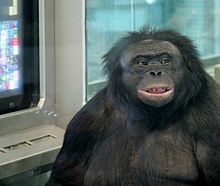(单词翻译:单击)
Johnson
约翰逊语言专栏
Everyday superheroes
日常的超级英雄
A new book spells out the magic of language
一本新书阐明了语言的魔力
In “avengers: endgame”, a superhero blockbuster, the baddy’s Infinity Gauntlet gives him the power to snuff out the universe with the snap of a finger. This may sound impressive, but—although few realise it—ordinary people possess an infinite power, too: language.
在超级英雄大片《复仇者联盟3:终局之战》中,灭霸的无限手套可以一个响指消灭整个宇宙。这听起来可能令人印象深刻,尽管很少有人意识到,但是通人也拥有一种无限的力量:语言。
Write a new sentence and Google it. The chances are good that it appears nowhere among the billions on the internet. Steven Pinker, a professor of linguistics, reckons a conservative estimate of the number of grammatical, 20-word sentences a human might produce is at least a hundred million trillion— far more than the number of grains of sand on Earth. Most can easily be made longer (try adding “She said that…” to the beginning of any declarative sentence). In theory, the only thing preventing this power from being literally infinite is the human lifespan: some possible sentences would be too long to say even in threescore years and ten.
写下一个新句子,然后在谷歌上查阅。它很有可能在互联网上的数十亿句子中无处可寻。语言学教授史蒂文·平克估计,保守估计,一个人能说出至少有1亿个亿20个单词的语法句子——远远超过地球上沙粒的数量。大多数都可以很容易地变长(试着在陈述句的开头加上“She said that…”)。从理论上讲,唯一能阻止这种力量无限存在的是人类的寿命:有些可能的句子太长了,甚至一辈子都说不完。

This awesome talent is the subject of a new book, “Language Unlimited” by David Adger of Queen Mary University, the president of the Linguistics Association of Great Britain. Mr Adger does not just celebrate language’s infinity. He maintains that it is the distinct result of a unique capacity, advancing a series of arguments whose best-known exponent is Noam Chomsky.
英国玛丽女王大学的大卫·阿杰和英国语言学协会主席出版了一本新书《语言的无限》。阿杰先生不仅仅是在庆祝语言的无穷无尽。他坚持认为,这是一种独特能力的独特结果,提出了一系列以诺姆•乔姆斯基为代表的观点。
The book’s first, and strongest, claim is that human language is different from animal communication not just in scope, but in kind. Most important, it is hierarchical and nested in structure. A highly trained bonobo called Kanzi can obey commands such as “Give water [to] Rose”. But Kanzi does no better than random chance when told to “Give water and lighter to Rose.” Meanwhile, a two-year-old child tested alongside Kanzi quickly intuits that two nouns can make up a noun phrase, tucked as a direct object into a verb phrase, which in turn is part of a sentence. This “recursive” structure is key to syntax.
这本书的第一个也是最有力的主张是,人类的语言不仅在范围上不同于动物的交流,而且在性质上也不同。最重要的是,人类语言是分层的和嵌套的结构。一只名叫Kanzi的受过良好训练的倭黑猩猩能够服从诸如“给玫瑰浇水”之类的命令。但是当Kanzi被告知“给玫瑰浇水和给玫瑰打火机”时,他的表现并不比随机选择好多少。与此同时,一个两岁大的孩子和Kanzi一起做了测试,孩子很快就察觉到,两个名词可以组成一个名词短语,作为直接宾语塞进一个动词短语中,而动词短语又是句子的一部分。这种“递归”结构是语法的关键。
译文由可可原创,仅供学习交流使用,未经许可请勿转载。


